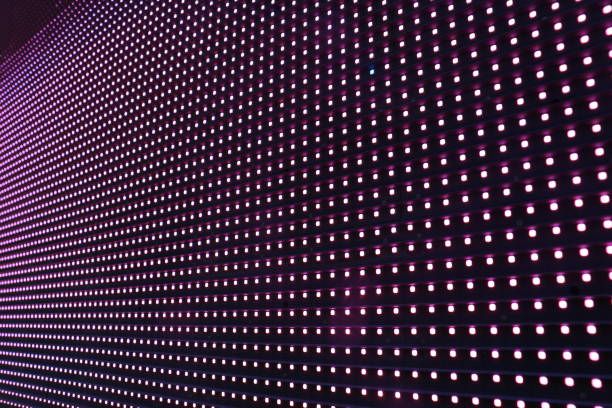
Get a Quote
Improving Contrast Ratios in LED Displays
Introduction
When it comes to LED displays, the contrast ratio stands as a critical factor determining the quality of displayed images. Essentially, it measures the difference between the brightest and darkest areas of the screen. This disparity directly influences the clarity, depth, and overall vibrancy of visuals, making it a crucial consideration for anyone seeking top-notch image quality.
Importance of Contrast Ratio in LED Displays
The contrast ratio essentially acts as the backbone of visual experience on LED displays. It dictates how well the screen can distinguish between various shades of brightness, ultimately impacting the clarity and realism of images and videos. A higher contrast ratio means a more significant disparity between bright and dark areas, resulting in sharper details and more immersive content consumption.
Significance of Enhancing Contrast Ratio for Image Quality
Improving the contrast ratio isn't just about making images look prettier; it's about elevating the entire viewing experience. By enhancing the disparity between light and dark, viewers can enjoy richer colors, deeper blacks, and overall sharper visuals. This improvement is particularly crucial in applications where image quality plays a pivotal role, such as digital signage, entertainment, and advertising.
Overview of Techniques to Improve Contrast Ratios
Enhancing the contrast ratio of LED displays involves a combination of technical considerations and practical strategies. From choosing the right hardware components to implementing advanced display technologies, there are several avenues to explore. In the following sections, we'll delve into these techniques, shedding light on how each contributes to maximizing the contrast ratio and delivering unparalleled image quality.
Understanding LED Display Contrast Ratio
Definition and Measurement
The contrast ratio of an LED display refers to the difference between its brightest and darkest areas. This metric, typically measured in terms of luminance, plays a crucial role in determining the visual quality of displayed content. Essentially, it quantifies the display's ability to render distinct levels of brightness and darkness, thereby influencing the perceived depth and clarity of images and videos.
Significance in Image Perception
Understanding the contrast ratio is paramount for grasping how viewers perceive displayed content. A higher contrast ratio translates to more vibrant and visually striking images, as it enhances the differentiation between light and dark elements. This heightened contrast contributes to sharper details and a more immersive viewing experience, captivating audiences and leaving a lasting impression.
Differentiating Static and Dynamic Contrast Ratios
When evaluating contrast ratios, it's essential to distinguish between static and dynamic measurements. Static contrast ratios represent the difference in luminance between a fully illuminated white pixel and a completely black pixel, providing a snapshot of the display's capabilities. On the other hand, dynamic contrast ratios factor in the display's ability to adjust brightness levels dynamically based on the content being shown, offering a more nuanced assessment of performance under varying conditions. Both metrics offer valuable insights into the display's image-rendering capabilities, aiding in informed decision-making for consumers and professionals alike.
Factors Affecting LED Display Contrast Ratios
Role of LEDs in Contrast Ratio Enhancement
LEDs play a pivotal role in shaping the contrast ratio of LED displays. Their luminance output, or brightness, directly impacts the overall contrast ratio, with higher brightness levels contributing to more vibrant images. Additionally, LEDs influence the display's black level performance, as their ability to produce deep, true blacks enhances the overall contrast ratio. The placement and design of LEDs on the display panel also play a crucial role, with well-optimized layouts minimizing light leakage and improving uniformity across the screen, ultimately leading to better contrast performance.
Influence of Display Panel Technology
The choice of display panel technology significantly affects the contrast ratio of LED displays. Different technologies, such as LCD and OLED, offer varying levels of contrast performance. OLED displays, for instance, excel in contrast ratio due to their ability to individually control each pixel's brightness, resulting in deeper blacks and infinite contrast ratios. Understanding the nuances of each technology empowers consumers to make informed decisions when selecting LED displays that best suit their needs.
Importance of Image Processing Algorithms
In addition to hardware components, image processing algorithms play a critical role in optimizing contrast ratios. These algorithms fine-tune the display's performance, ensuring consistent brightness and color levels across the screen. By leveraging advanced processing techniques, manufacturers can enhance contrast performance and deliver superior image quality. Thus, when evaluating LED displays, it's essential to consider not only the hardware specifications but also the sophistication of the underlying image processing algorithms.
Techniques for Improving Contrast Ratios
Utilizing High-Quality LEDs
Embracing high-quality LEDs can significantly enhance the contrast ratio of LED displays. These advanced LEDs offer superior luminance output, resulting in brighter whites and deeper blacks. By incorporating higher contrast ratio LEDs, manufacturers can deliver displays capable of producing more vibrant and visually captivating images.
Implementing Local Dimming Technology
Local dimming technology is a game-changer in the quest for superior contrast ratios. By selectively dimming specific areas or zones of the screen, this technique achieves deeper blacks and enhances overall contrast. The ability to control backlighting at a granular level minimizes light leakage, resulting in sharper image quality and heightened immersion for viewers.
Leveraging Pixel-Level Control
OLED displays boast pixel-level control, enabling them to achieve infinite contrast ratios. With the ability to turn off individual pixels completely, OLEDs deliver true blacks and unparalleled contrast. This precise control over brightness levels enhances image clarity and depth, making OLED displays an ideal choice for applications demanding the highest contrast performance.
Optimizing Brightness Levels
Finding the optimal balance of brightness is crucial for maximizing contrast ratios. Setting the brightness too high can lead to reduced contrast and washed-out colors, while too low brightness may result in dull images. By carefully calibrating brightness levels, users can achieve vibrant visuals while preserving the stark contrast between light and dark elements.
Regular Calibration for Optimal Performance
Regular calibration ensures that LED displays maintain consistent brightness and color levels over time. By fine-tuning display settings and color profiles, users can uphold optimal contrast performance and image quality. Calibration also helps mitigate issues such as color drift, ensuring that the display continues to meet the highest standards of performance and visual fidelity.
Managing Ambient Light Conditions
Controlling ambient light conditions is essential for maximizing contrast ratios in LED displays. Minimizing external light sources reduces screen glare and enhances contrast, resulting in crisper and more defined images. Implementing strategies such as using curtains or blinds and incorporating ambient light sensors enables users to maintain ideal viewing conditions and elevate the overall visual experience.
Choosing Displays with Optimized Black Matrix Design
Displays featuring optimized black matrix designs excel in minimizing light leakage between pixels. This design element enhances the differentiation between dark and bright areas, ultimately improving contrast ratios. By selecting displays with well-engineered black matrices, users can enjoy sharper details and more immersive visuals across a wide range of content.
Utilizing High-Quality Content
Optimizing content for LED displays is paramount for realizing their full potential. High-quality content takes advantage of the display's capabilities, showcasing a diverse range of brightness and contrast levels effectively. By utilizing content optimized for display specifications, users can ensure that every detail shines through, maximizing contrast ratios and delivering captivating visual experiences.
Performing Regular Maintenance
Regular maintenance is essential for preserving the long-term performance of LED displays. Tasks such as cleaning the display surface, inspecting connections, and updating software/firmware help ensure optimal functionality and image quality. By staying proactive with maintenance efforts, users can prolong the lifespan of their displays and maintain peak contrast performance over time.
Conclusion
Enhancing the contrast ratio of LED displays is essential for delivering superior visual experiences across various applications. By implementing techniques such as utilizing high-quality LEDs, implementing local dimming technology, and optimizing brightness levels, users can elevate image quality and captivate audiences with vibrant and immersive visuals.
For those seeking to enhance their visual experiences and unlock the full potential of LED displays, I highly recommend exploring EACHINLED's LED displays. With their robust R&D capabilities and dedication to customer-centric solutions, EACHINLED is poised to empower users with cutting-edge technology and unparalleled support. Experience the difference with EACHINLED and transform your visual displays into captivating spectacles that leave a lasting impression.


